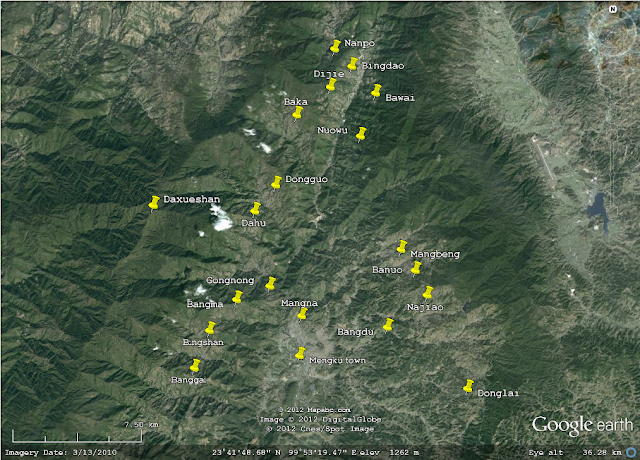Here is a map of Yongde area, in the West of Lincang County, Yunnan.
The main tea villages are indicated on the map, following is a list with more information.
village name altitude size of the tea gardens age of the tea gardens
Manlai (Daxueshan): 2100 m 400 000 wild tea trees thousands years old
Banka Xiang 班卡乡: 2000m 50 ha 100 years old
Mangfei 芒肥: 1500m 64 ha 80 years old
Tuanshu 团树 ‘: 2000m 100 ha 60 years old
Yuhua 玉华Ž: 1900m 150 ha 70 years old
Pingzhang 平掌: 2000m 50 ha 60 years old
Mingfeng Shan 鸣凤山: 1900m 50 ha 90 years old
Meiziqing 梅子清: 2000m 105 ha 100 years old
Mugua Zhai 木瓜寨: 1500m 50 ha 80 years old
Dika 底卡: 1700m 50 ha 100 years old
Wujia Zhai 武家寨: 2000m 50 ha 100 years old
As you can notice, the quantity and age of the tea gardens is not super impressive, maybe this is one of the reasons why Yongde is a bit neglected. Good for the amateur! Yongde Cha features lower prices than other areas and has its load of hidden gems.

